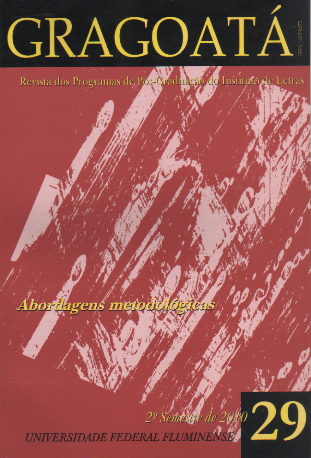Status of “cê” form: clitic or word?
DOI:
https://doi.org/10.22409/gragoata.2010n29a33081Keywords:
‘cê’ form, clitic, phonological word, Prosodic Phonology, CliticizationAbstract
The fact that investigations consider ‘cê’ a syntactically clitic pronoun and the finding that this form may appear in positions in which a clitic does not occur made us question its character. Thus, based on data extracted from attested and published literature beyond constructions of the dialect from the North of Minas Gerais, Brazil, based on the Cliticization theory and Prosodic Phonology, we found out that ‘cê’ behaves not as a clitic, but as a full word. Besides, we proposed, still based on the Prosodic Phonology , that the perceived stress on ‘cê’ is at the phrase level, not at the word level. So this stress absence occurs due to the possibility of stress prominence alternance at the intonation phrase level which, due to its relation to semantic, syntactic aspects and speaker performance, determines a strong or weak node to ‘cê’, that is, its strong or weak position in the sentence.Downloads
Downloads
Published
How to Cite
Issue
Section
License
Authors who publish in Gragoatá agree to the following terms:
The authors retain the rights and give the journal the right to the first publication, simultaneously subject to a Creative Commons license CC-BY-NC 4.0, which allows sharing by third parties with due mention to the author and the first publication by Gragoatá.
Authors may enter into additional and separate contractual arrangements for the non-exclusive distribution of the published version of the work (for example, posting it in an institutional repository or publishing it in a book), with recognition of its initial publication in Gragoatá.

Gragoatá is licensed under a Creative Commons - Attribution-NonCommercial 4.0 International.











